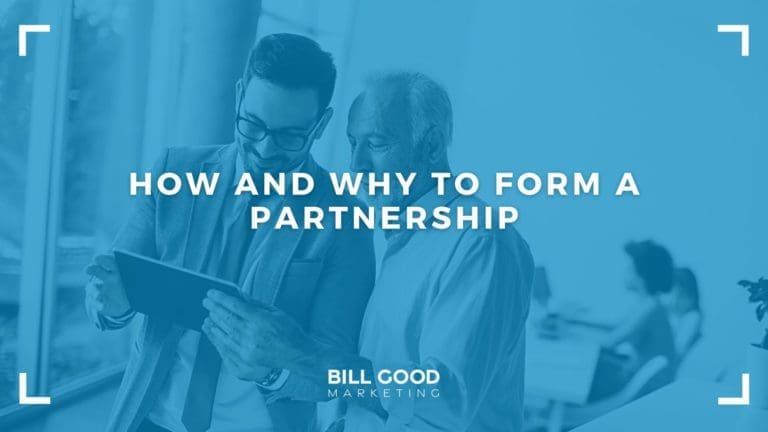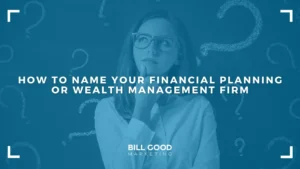The original version of this story was published in Research Magazine® in 1992 (now ThinkAdvisor®). This article has been updated for the year 2023.
I have been an advocate of teams in the securities industry for a long time, longer than most have been in the industry. My writings on this go well back into the ’80s, when some of my younger readers were still in training pants. I profoundly believe that it is only teams that will survive and amount to anything. One form the teams will take is partnerships.
I used to believe everything I had been told about partnerships:
- They’re less stable than marriages
- 90% of them break up
- Since 1+1=2, why bother?
My mind began to change back in 1987 when we began to get some interest from partners in our computer-based marketing system. We sold a few copies and got a lot of complaints from partners because a single-user version did not address their specific needs.
So, we went to work designing a “partnership” version and, in the process, worked quite closely with a couple of partnerships. Lo and behold, we discovered that partnerships can be an:
Immensely Viable Organizational Structure
There must be an economic or family reason for the partnership. By “economic reason,” I really mean a division of labor. And that means some degree of difference in the specialization of the partners’ investment or planning expertise, selling techniques, or prospecting skills.
The “family” reason is normally the desire of an established financial advisor to pass on a business, intact, to another family member—generally a son or daughter.
Other reasons undoubtedly exist for forming partnerships. These may include taking more time out of the office while still providing continuous coverage for clients, friendship, and the often-mistaken belief that 1+1=3. When one of these motivations is extremely strong, the partnership may make it.
But it’s the economic or family reason that seems to provide the force that binds the organization together. After all, two 35-year-old financial advisors who do the same kind of business in the same market do not have an economic reason for forming a partnership, and if they do form a partnership, it will probably not survive.
Nevertheless, here are three models of successful partnerships I’ve observed that were formed for “economic” reasons:
- Prospector-Developer. In this model, one partner concentrates on bringing in new clients; the second partner concentrates on deepening relationships and serving the clients.
- Senior-Junior.Family partnerships are usually this model, although I have seen many senior producers team up with an energetic, newer producer. The split here is usually uneven, in favor of the senior producer, but the understanding is that as the senior producer fades away, the business will go to the younger person.
- Planner-Investment Manager.One partner prefers the in-depth planning approach. The other deals with managing investments.
A good economic reason alone certainly won’t guarantee survival. You also need:
Complete Trust
I recently spoke with a financial advisor who was considering a partnership with another advisor in his office. There was definitely an economic reason for it. The potential partners were of different ages and had different skills yet they seemed to complement one another.
“What about the trust factor?” I asked. “Could you trust this person enough to go away for a month and completely enjoy a vacation?” There was a pause, and then, “I think so.”
I advised against proceeding with the partnership until the question of trust had been resolved. Trust is most often developed over time. I suggest partnering on something small that has a definite ending, like an event. Does your level of trust grow while working together on that event, or is it still the same? If it grows you can move forward.
Once you’ve established the economic reason and the trust, you can now proceed to resolve:
The Key Issues
1. Fairness
A few years ago, I mediated a partnership breakup. Here’s what happened:
A top-notch prospector teamed up with another financial advisor who seemed to have good client-development skills.
The prospector’s plan was: “I’ll go out into the forest and hunt new business; you keep the camp going.”
In a fairly short period of time, it became apparent that there was a marked difference between the two parties’ work ethics. New clients weren’t getting called and developed—so that was the end of that partnership.
But I’m also familiar with another partnership where one partner works much harder than the other, but the second partner works longer.
So, the lack of an equal work ethic is not necessarily a make/break point for partnership success. In the first case, this difference led to an unfair situation but, in the second case, one member’s increased hours made the situation fair because both were getting their job done.
2. The Split
Surviving partnerships seem to split everything 50-50. This doesn’t mean that the split needs to start out 50-50. But it needs to trend towards that goal.
It obviously wouldn’t make sense for a senior producer with $100 million in assets to take in a junior partner with $20 million and immediately start with a 50-50 split.
Let’s say the partnership production is $1 million in the last 12 months. The senior partner produced $750,000 while the junior partner produced $250,000. At the beginning of the partnership, they would split at 75 percent for the senior partner and 25 percent for the junior. But at $1.25 million, the split might be 65-35.
After all, the senior partner is making more money than he alone produced at $750,000, while probably working less. And the junior partner’s income is certainly increased.
At $l.5 million, the split might be 60-40.
At $2 million, it might go to 50-50.
3. The Breakup
I’ve spoken with dozens of prospective partners. I’ve been very careful to give each of them this very important piece of advice: While the blush is still on the rose, sit down on a Saturday or Sunday afternoon, with spouses, away from the office—and decide what would happen if the partnership were to break up. Take notes and then give these to a lawyer to craft into a binding agreement.
Here are some of the key questions to answer:
- How are accounts that are pooled in the beginning to be divided? What if one of you contributed the account in the beginning but the other was the primary advisor afterward?
- What about accounts brought in by the partnership? Are they to be divided equally, by assets, by revenue, or by some other formula?
- What happens if one of the partners becomes sick or disabled and can’t work for a period? What if it’s a permanent disability? Is there a buy-out clause or does the business just go to the remaining partner? What about the death of a partner? Does the surviving spouse have any rights?
- How are disputes to be resolved? If you haven’t worked out an answer to this question, a disagreement can paralyze you both. A suggestion: Agree on a third person whose vote will break a tie. Then you can get on with the show.
- Suppose one of you wants to change firms and the other doesn’t?
Settle these issues before they become conflicts. Then your partnership has a much better chance of survival.
What About a “Trial” Partnership?
I’ve seen a number of trial partnerships wherein two financial advisors will get together on just a certain kind of business and split that. If that arrangement works, you can go ahead and take the plunge into full partnership.
Of this I’m sure: Partnerships, when they work, are . . .
Great for Clients
With a partnership, clients have instant access to a second opinion, instant access to additional expertise and, perhaps most importantly, they should always have access to one of the partners. If you’re out of the office, your partner should be there.
The benefits of a great partnership can be immense.




